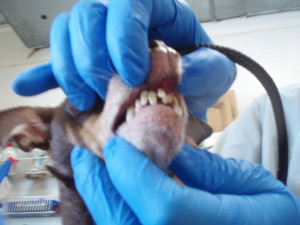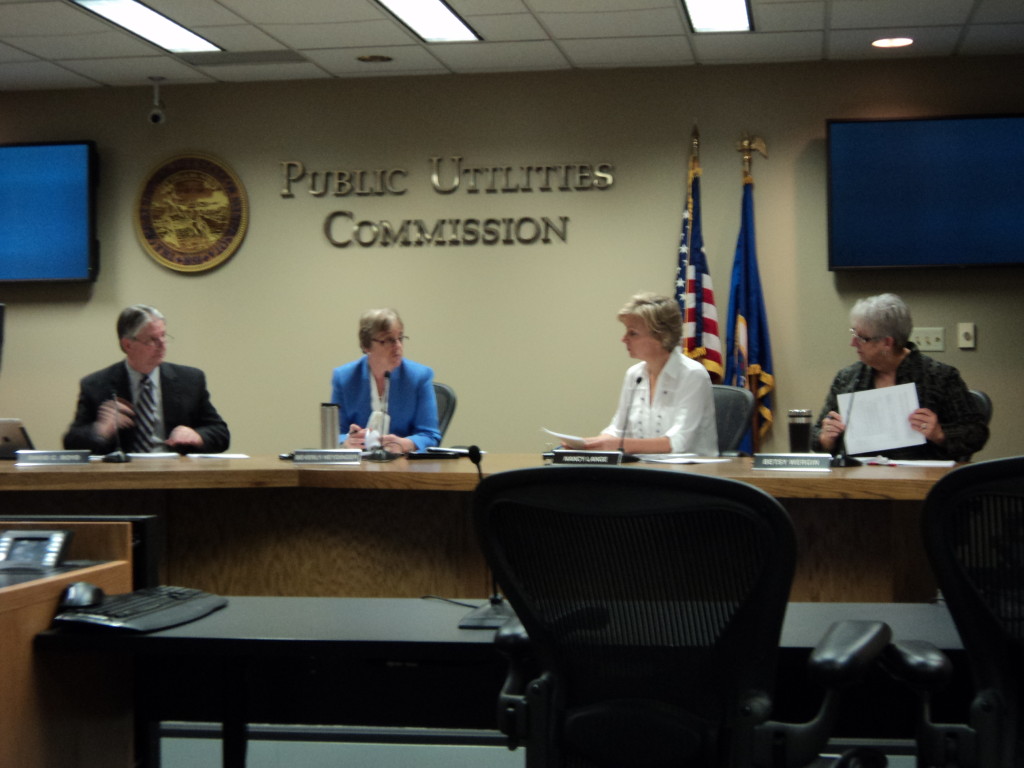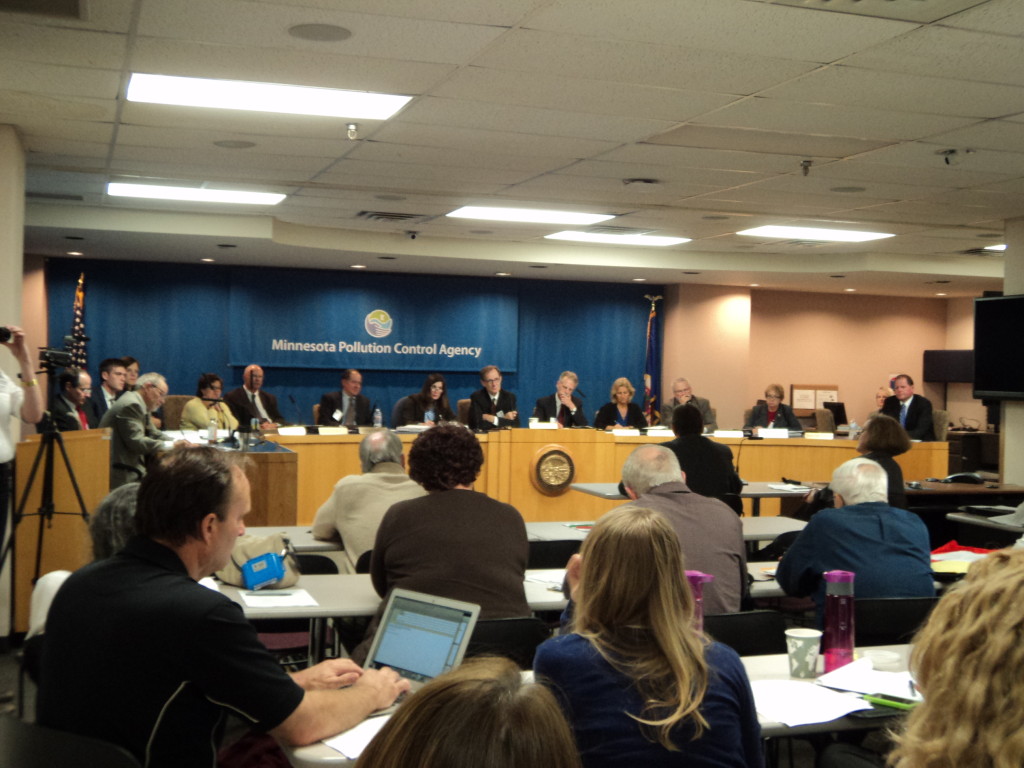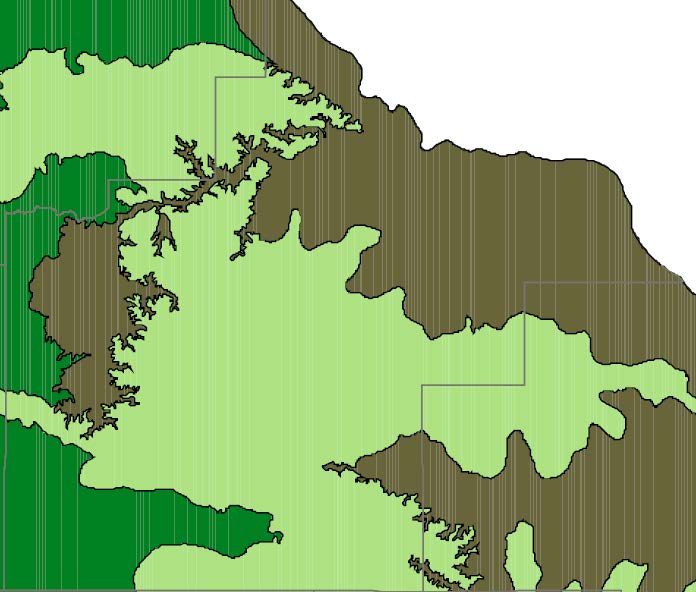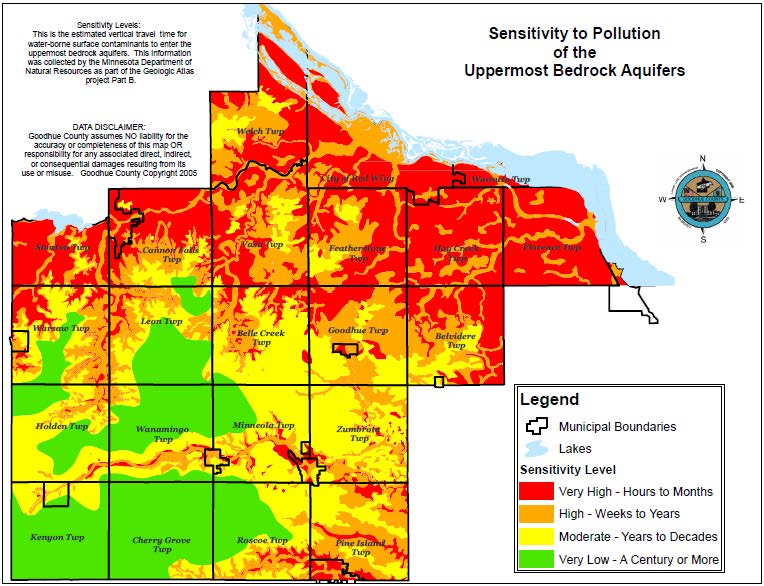A policy win in Goodhue Co. District Court!
October 20th, 2013
I’m on the Board of the Humane Society of Goodhue County, have been for a while now, and GOOD NEWS!! Thursday, in Goodhue County, we were able for the first time to see an animal hoarder sentenced and required to undergo a psychological evaluation for harding. Representing the animals, through our Victim Impact Statement, we made this the top priority, with restitution of our costs (a very conservative estimate), secondary.
Over the years, we’ve had more than a few hoarding cases here in Goodhue County, and the Humane Society of Goodhue County is on call to address these problems, working with law enforcement and social services to inspect the home, assess the situation, and if necessary, confiscate animals.
Hoarding is a serious problem, and hoarding animals is even worse because animals are involved, living in squalor in a situation where the person responsible for them has no insight into the problem, no awareness that it is a problem, and typically the people involved feel that they are caring for the animals and no one else could do as good a job.
Small rescues often turn into animal hoarding situations, because there are so many animals needing help, needing homes, that people take animals in but don’t have sufficient resources to care for them, be it space at a rescue with a facility, through boarding, or available fosters. I know about this from personal experience — the rescue that took in our Kady and found her a foster out on Long Island until we got her, 6th Angel Shepherd Rescue, was recently shut down for animal neglect and abuse. Terry Silva was charged with 43 counts of animal cruelty and Samantha Kenney 28 counts. Terry Silva convicted of 43 counts of animal cruelty.
The woman running it had 29 dogs in her law office! Another article: Some ask “what justice?” in Delco animal abuser verdict.
Collection of articles about Terry Silva and 6th Angel Shepherd Rescue.
So back home to Goodhue County. This Thursday, perhaps a little justice for abused animals. We had a win in Goodhue County District Court, a win because the court ordered a psychological evaluation for hoarding and compliance with the recommendation.
This is HUGE because hoarding is not something that just stops, hoarders start up all over again, recidivism is essentially 100%. Hoarding is now listed as a psychological disorder in DSM-V, and treatment is available, there are several practitioners in the area who work on hoarding issues. In this case, there were 26 animals, 7 dogs and 19 cats, who were neglected, inadequate food and water, lacking veterinary care, physical problems including rotting, loose and missing teeth, egregiously long toenails, filthy and matted coats, ear mites, and one with tumors. The animals were not spayed and neutered, and often in front of the house there was a large sign posted to sell puppies. The condition of the house was horrific, dog and cat shit everywhere, even on the kitchen counter, piled on furniture, and while they were confiscating the animals, a cat pissed on a bed! The smell was overpowering to the people on the scene.
The defendant settled for two counts related to the animals, and five other counts were dismissed, and as sentencing, one year of probation, the psych eval and follow up, restitution of $3,367.40 to the Humane Society (converted to a civil judgment as the defendant has no money) with specific direction to work through the probation officer to pay when possible, no new animals, and no contact with the new adoptive owners of the animals. Our goal was that the defendant be required to be evaluated for hoarding, and it’s ordered!!!
This is something that I want to see in every jurisdiction, because intervention is the only way a hoarder is going to, hopefully address hoarding. There’s no guarantee of progress or effectiveness, of course, but it’s a start.
Keeping on keeping on…
October 12th, 2013
Sometimes it gets really tired out. There have been two LONG projects that slowly wound down lately, five long years. It’s hard to keep up that kind of slow-motion fight. Ya know how that is? Well, the article below was received a while back from a cohort in a big long mess of a case that ended sort of well (except that someone always gets stuck with the infrastructure in their yard). Knowing of the battle, being out there on the front lines, she sent this:
Worth the read… a reality check that we are indeed in a long strange trip!
And speaking of this activist cohort, look who’s joining her family, is she cute or what — look at that smile, it’s enough to sustain any conservationist. I’m SO looking forward to meeting this little grrrrrrrl:
After 5 (#&%(#)* years — Goodhue Wind is DEAD!
October 10th, 2013
What a day at the Minnesota Public Utilities Commission:
This project, applied for back in 2008 as “Goodhue Wind” and then in January 2010 becoming AWA Goodhue, and then ??? more recently becoming “New Era Wnd,” has been a headache for the state since the original application. For those in and near the footprint, it’s been much more than a headache. Now, after over 5 years of weighing in, participating, dodging helicopters and gathering frightened cattle, digging through deeds and filings at the County Recorder’s office, scouring the countryside for eagle nests that developers don’t want found, compiling piles and piles of information and testimony about impacts of low frequency sound, wading through misrepresentations, misstatements and mischaracterizations and discovering the truth, taking every possible avenue to be heard and finding a few more for good measure, after five long years we can finally say, “YES!!!” this project is over, it is done, DEAD!
The Goodhue Wind Certificate of Need and Siting Permit have been REVOKED. The Power Purchase Agreements with Xcel Energy have been terminated.
Five long years, what a headache…
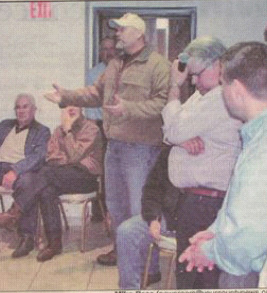
Five years — what took so long?
Looking at the big picture, this is an example of systemic problems within the state, at the Public Utilities Commission, at the Dept. of Commerce, and at the legislature.
I also ask, what is it with these projects in Goodhue County? I’ve been involved in three of them, three projects not built, ranging from NSP’s nuclear waste “in Goodhue County” in Florence Township; to the Kenyon Wind project proposed by John Daniels, husband of Windustry’s Lisa Daniels and which, as the first C-BED project in the state, proposed to put a substation and turbine on former House Speaker Steve Sviggum’s land; and this “Goodhue Wind” project (note that we’re not counting the quickly dropped CapX 2020 initial talk of coming down the west side of the Mississippi over “Site P” in Florence Township, and the much longer CapX 2020 proposal and ultimately permitted transmission line on the west end of the county, that is a whole ‘nother story, to be found at www.nocapx2020.info!). NONE of these three projects were built, and ALL took five years to get from proposal to rejection. WHY SO LONG?
I see this as a litany of systemic problems.
SYSTEMIC PROBLEM #1 – INADEQUATE ENVIRONMENTAL REVIEW
It’s pretty much a no-brainer, but once more with feeling… environmental review for wind projects is inadequate because the siting law exempts wind projects from environmental review!!! This is not compliant with the Minnesota Environmental Policy Act. And under the Certificate of Need rules, all that’s necessary is an “Environmental Report,” and not an Environmental Impact Statement. This “Environmental Report” though, to be clear, is NOT statutory, it is the work of the agency in rulemaking, perfectly legal for the agency to write its own rules, BUT it’s time they were challenged on the result, the failure of any agency to require an environmental impact statement on a project with such significant impacts. We’re in rulemaking now on Certificate of Need, and it’s time to correct that change made about a decade ago.
Another aspect to this is that Bill Grant, formerly Izaak Walton League, is now in charge of utility infrastructure siting at the Dept. of Commerce. Bill Grant is one who helped usher through the legislation exempting wind projects from environmental review!!! He’s got to go and we’ve got to undo the damage he’s brought to the state of Minnesota.
The state law requires:
This review of impacts, including economic, employment, and sociological effects must be addressed. We need to look at the adverse impacts, not ignore them, and we must not inflict the impacts on a community while castigating those who struggle to make the impacts known. And FYI, an “Environmental Report” is not an “Environmental Impact Statement.”
SYSTEMIC PROBLEM #2 – REGULATORS THAT WON’T REGULATE
This project dragged on and on and on and on and on and on, because no one wanted to make a decision on this project. Evidence piled up, the developer wouldn’t produce requested information… How much of a demonstration of inability to put together a project is necessary before action is taken? How much is necessary before it’s apparent that the project shouldn’t have a permit in the first place? How much misrepresentation before the state stands up and says NO! The Public Utilities Commission must be willing to look at the economics and the structure of a proposed project — THEY’RE the regulator. Take a close look at projects, and sooner rather than later!
SYSTEMIC PROBLEM #3 – APPLICANTS ARE RUNNING ROUGHSHOD OVER PEOPLE
Projects run roughshod over people in the area. In this case, standing up to the Goodhue Wind Project took five years of commitment, as significant cost to those who participated. It was the people who initially raised the issues that ultimately killed the Goodhue Wind Project, including C-BED status, eagles, siting, multiple misrepresentations on the part of the Applicants. But this isn’t their job, it’s the job of the regulators, meaning it is the job of the Dept. of Commerce and the Public Utilities Commission to investigate, to verify information, to assure that the applicant produces the information necessary and that its representations are TRUE!
When I work with clients on a project like this, I urge them to develop a big picture approach, and to work within the framework provided. It’s arcane, it’s a royal pain, but this is what we’ve got. Unfortunately, this is not an example where “the system worked,” and instead, it is yet another example that it did not work. The Goodhue Wind Project fell apart of its own deficiencies. YEAAAAAAAAA! But don’t be fooled. The regulatory system in Minnesota is NOT working. Don’t be fooled for one minute!
The good news of this is that Peter Mastic can close his “office” and go back to Nevada:
Annual Humane Society Gala!
October 6th, 2013
Comments on EQB Standards & Criteria
October 4th, 2013
On September 18th, the EQB sent staff back to the drawing board to rewrite model Standards and Criteria for silica sand mining… so NOW is the time to be filing comments on your ideas for EQB Standards and Criteria. New EQB Executive Director Will Seuffert has said that at the next meeting he will trot out a schedule for these festivities:
Here’s an example — the Comment drafted on behalf of Winona Co. CASM:
So, what to do? How do write your own comments? Here’s a format and form that may prove useful, see below for suggestions:
Send comments ASAP (the sooner the better) to:
Will.Seuffert@state.mn.us
jeff.smyser@state.mn.us
bob.patton@state.mn.us
kate.frantz@state.mn.us
The legislation passed last year, Minn. Session Laws Ch. 114, sets out categories for these Standards and Criteria (remember, this is NOT rulemaking, not any specific procedure for doing this). They’re needing your thoughts on Standards and Criteria, and there are so many categories that you’re bound to have some thoughts on this.
Many people have said this is just too complicated, and what I suggest is to take it in small pieces. For example, if you care about protecting the bluffs, just select that one row:
One way to do this is to work it backwards, do your research and work from right to left:
1) “Support for language” column, where you’d list the studies that support protection of the bluffs, i.e., “DNR Eco-Regions Subsections map” (with a copy to attach to your comment);
2) “Proposed Language” using that info as basis for language, from a map, studies, state statutes, local ordinances, figure out how bluffs could be protected, such as a prohibition of mining in bluffland areas as depicted by the dark green/grey of this map:
Your comment would look like this:
Or if you’re concerned about water, again, working backwards:
1) “Support for Language” column: Goodhue County map showing Sensitivity to Pollution of the Uppermost Bedrock Aquifers (with copy of map attached to Comment):
2) “Proposed Language” column: Prohibition of mining in areas with Very High or High sensitivity to pollution of the uppermost bedrock aquifer.
Your comment would look like this:
And another example:
The catch in all of this is that your comments have to specifically relate to the legislatively mandated development of Standards and Criteria — it’s not enough to give vague generalities and rah-rah no frac sand mining here statements. And working backwards seems to be the best way to develop this, to do some basic googling and find studies. Check the Save the Bluffs reference page for some ideas:
Again, here’s a format and form that may prove useful, see below for suggestions:
Send comments ASAP (the sooner the better) to:
Will.Seuffert@state.mn.us
jeff.smyser@state.mn.us
bob.patton@state.mn.us
kate.frantz@state.mn.us
| Standards & Criteria (from statute) | Proposed language | Support for language |
| (1) Setbacks or buffers | ||
| (iv) Bluffs |



